Tea caddy manufacturing process
Kaba-zaiku, which is made by thinly shaving the bark of wild cherry trees and attaching it to the bare wood with a trowel, is said to be a unique bark craft in the world. There are about 12 types of bark, including ame-kawa, chirashi-kawa, and hibi-kawa. It is smooth and strong, and it is also resistant to moisture and dryness.
-
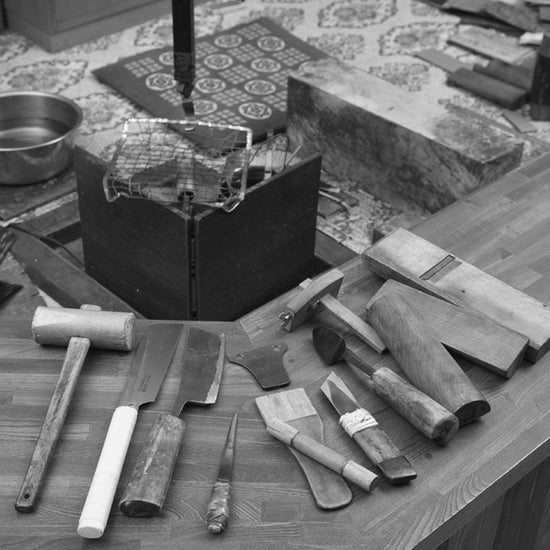
tool
A variety of tools are used, such as wooden mallets, saws, planes, ruled lines, stitches, and scouring boards.
-
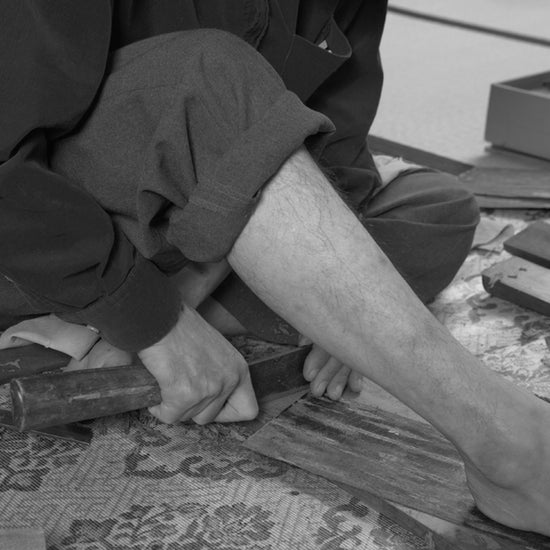
1. Birch shavings
The wild cherry tree bark that is used as a material comes in a wide variety of varieties, including the best bark known as cracked bark, smooth ame-kawa, and chirimen-kawa. The bark is cut according to the size of the object to be made. Moisten the water and apply a hot trowel to the bark, then steam it and rub it to soften the bark. By shaving the surface with a wide knife, the color is evened out and the bark is given a luster.
-
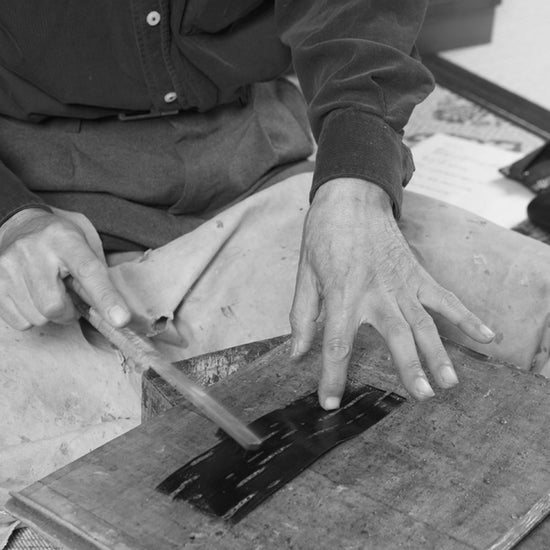
2. Apply glue
To make it easier to work with, apply glue to the thinly shaved bark and leave it to dry.
-
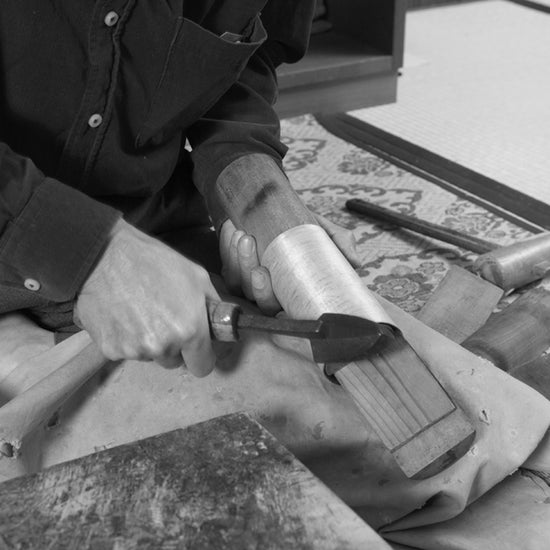
3. Preparation "Preparation for preparation"
After applying glue to the wood and drying it, it is wrapped around a wooden pattern, pressed with a trowel warmed to about 200 degrees to form a cylinder, and three layers are stacked to create a prototype.
-
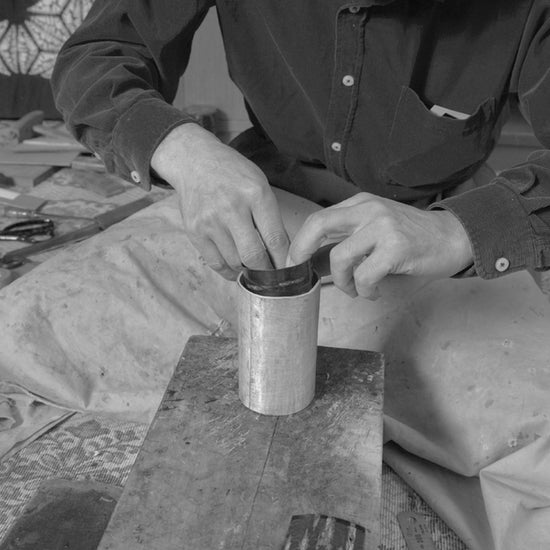
4. Preparation "Uchikaba-ire"
Apply glue to the inside of the original model of the wood shavings made in step 3, and attach the bark.
-
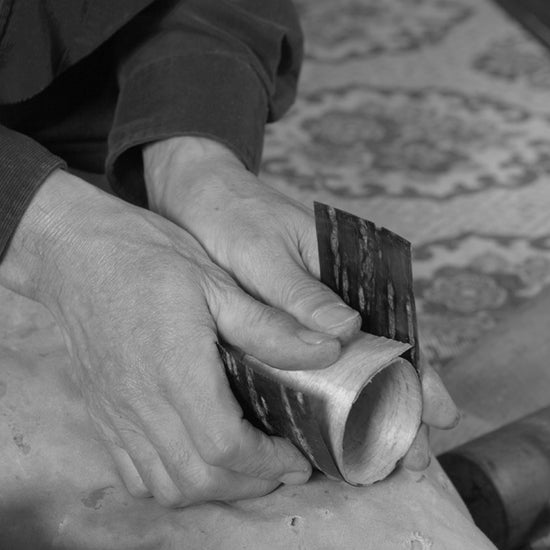
5. Preparation “Kuchikaba making”
Kuchi-kaba used for the "Kuchi" part of the body that can be seen when the lid of the tea caddy is removed.
Cut the glued bark to the right size and wrap it around a tree that is one size smaller than the original. -

6. Preparation "Kuchikabakise"
Paste 5 inside 4.
-
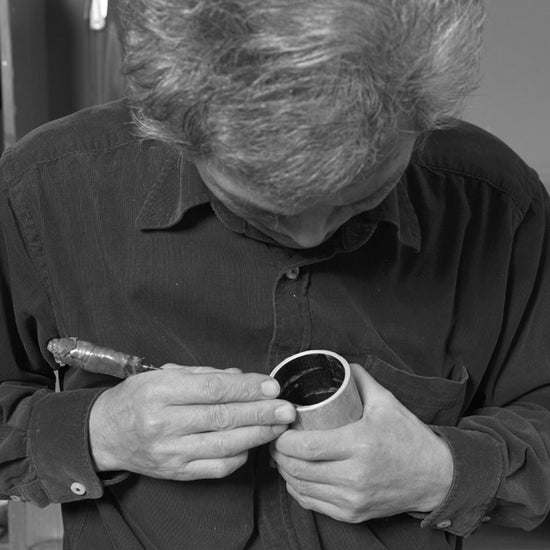
7. Paste "Separating the lid and core"
To separate the lid and the body, separate it with a small knife.
-
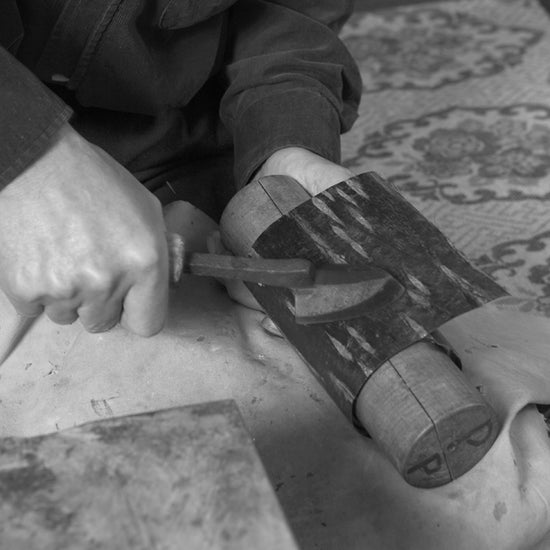
8. Pasting "do stick"
Apply glue to the body and wrap the bark around it using a trowel. Soak the trowel in water to determine the temperature at which the bark will not burn. Skilled skill is required to adjust the heat of the glue and trowel.
-

9. Paste "knot filling"
Bury the bark with a trowel where the knots of the bark stand out.
-

10. Pasting "Tenmori"
Process the top and bottom of the tea caddy. Scrape with a small knife and apply a planer to smooth the edges. As with the body, attach the bark using a trowel and a trowel. When the top is finished, the bottom part is processed in the same way.
-

11. Finish
The process of polishing to bring out the luster on the surface of birch. First, the sandpaper is 6 steps. From 180th to 800th, we will gradually make it finer. Next, it is polished with a powder, and finally finished with beeswax.












